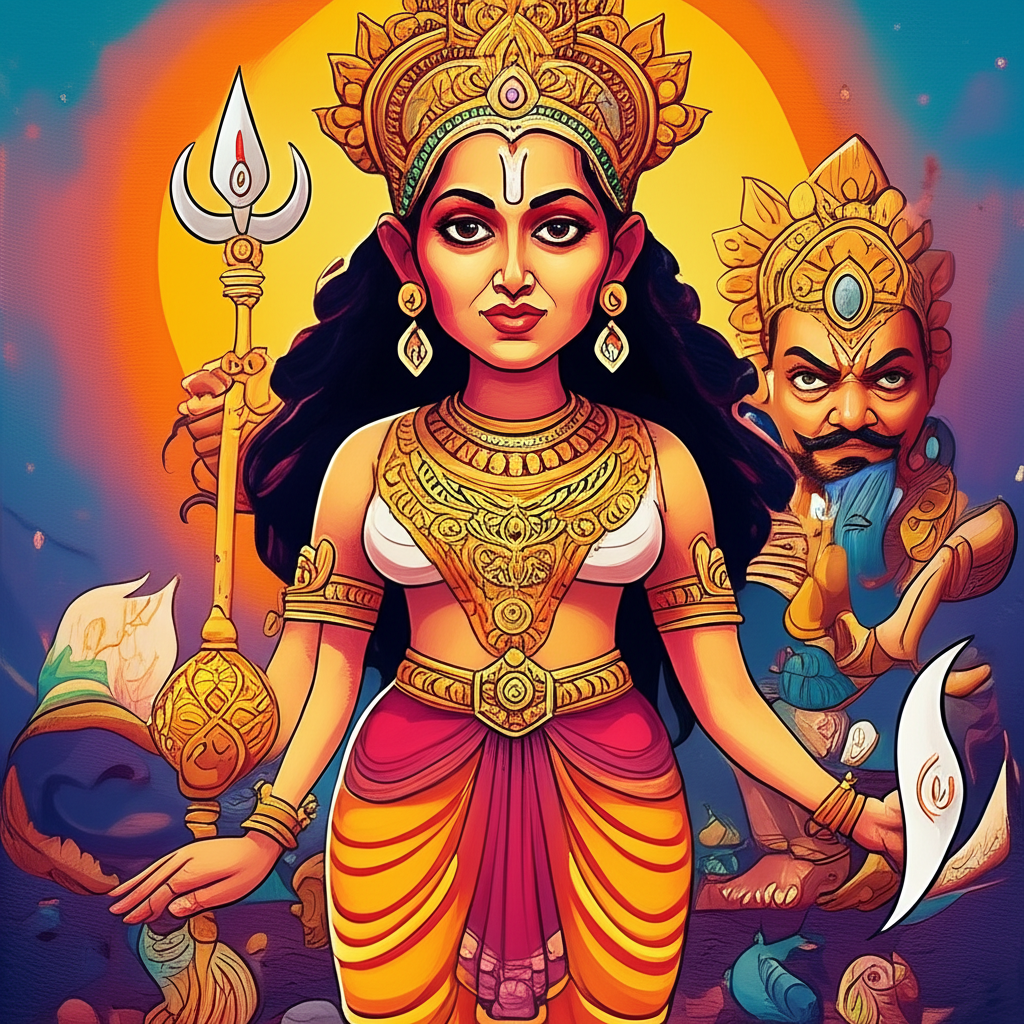
From the vibrant tapestry of ancient Indian mythology, specifically the rich narratives that surround the epic Mahabharata and the Puranas, emerges the ethereal concept of the Apsara. These celestial dancers and singers, woven into the very fabric of creation stories and divine dramas, often play significant roles in the legendary city of Dvaraka, the opulent capital ruled by Lord Krishna. It is crucial to preface this exploration by emphasizing that these are traditional stories, passed down through generations by ancient peoples, offering a glimpse into their worldview and imagination, and are not presented as factual accounts or to be believed as divine realities.
The cultural milieu in which these tales took root was one where the line between the mundane and the miraculous was fluid. In ancient India, particularly during the periods associated with the composition of the Vedas, Upanishads, and later the epics, the world was often perceived as a realm teeming with unseen forces. Gods, demigods, spirits, and celestial beings were thought to inhabit parallel planes, interacting with humanity in profound and often symbolic ways. The environment was deeply connected to the spiritual; nature itself was imbued with divine essence, and phenomena were often explained through mythological narratives. Society valued dharma (righteousness), karma (action and consequence), and the pursuit of moksha (liberation). Within this framework, beings like the Apsaras served as potent symbols, illustrating divine beauty, the allure of earthly pleasures, and the delicate balance between the mortal and the immortal.
The Apsaras, as depicted in these ancient texts, are beings of unparalleled beauty and grace. They are often described as celestial nymphs, daughters of the gods, whose primary role is to entertain and enchant the inhabitants of the heavens. Their forms are said to be exquisite, adorned with divine jewels and fragrant flowers, their movements fluid and captivating, their voices melodious and enchanting. They are not typically depicted as possessing overt powers of destruction or creation in the same vein as major deities. Instead, their influence lies in their ability to inspire, distract, and subtly shape events through their allure and artistry. Their symbolic attributes are manifold: they represent divine aesthetic perfection, the fleeting nature of beauty and pleasure, and the challenges that such earthly temptations can pose to ascetics and even gods. They embody the sensory delights of existence, the ephemeral beauty that can both elevate and lead astray.
The legend of Dvaraka, a magnificent city said to have been submerged beneath the Arabian Sea, is a cornerstone of Hindu mythology. It was the abode of Lord Krishna, a divine incarnation, and a center of power, prosperity, and spiritual significance. Within this grand narrative, the Apsaras often appear, not as primary actors, but as potent embellishments to the divine dramas unfolding. Imagine Dvaraka, a city of golden palaces and bustling marketplaces, where the air hummed with divine energy. Here, the Apsaras might be envisioned as performing in the celestial courts of the gods who visited Krishna, their dances and songs echoing through the heavens. They could be sent by the gods to test the resolve of sages or kings, their beauty and charm designed to distract from their spiritual pursuits. For instance, in some retellings, an Apsara might be tasked with distracting a powerful ascetic, whose austerities were deemed too formidable by the gods, thereby subtly rebalancing cosmic energies. Their presence in Dvaraka, even if primarily in a supporting role, underscores the city’s divine status and the pervasive influence of celestial beings in the mortal realm as conceived by these ancient storytellers. Their involvement wasn’t usually about direct guardianship in a protective sense, but rather about maintaining a cosmic order, sometimes through the subtle manipulation of human or divine desires.
The symbolism woven into the Apsara myth is rich and multifaceted. Their beauty and artistry can represent the pursuit of excellence and the appreciation of aesthetic perfection. However, their frequent role in testing ascetics also highlights the ancient Indian understanding of the challenges posed by sensual desires. The Apsaras serve as a reminder that even the most devout can be swayed by earthly allure, emphasizing the importance of self-control and inner strength. They can also symbolize the ephemeral nature of material wealth and pleasure, mirroring the eventual fate of Dvaraka itself, a city of great splendor that ultimately succumbed to the tides of time and divine will. In essence, they represent the vibrant, yet transient, aspects of existence.
In the modern world, the Apsaras continue to capture the imagination, finding new life in various forms of media and cultural expression. They are frequently depicted in Indian classical dance forms, where the movements and storytelling emulate their legendary grace. In literature and cinema, they appear as characters embodying divine allure, often serving as muses or figures of temptation, their presence adding an element of the mystical and the exotic. Video games often incorporate them as powerful, beautiful beings with unique abilities, drawing on their mythological archetypes. In cultural studies, they are examined as fascinating manifestations of ancient Indian societal values, artistic ideals, and spiritual philosophies, offering insights into how people of the past understood beauty, desire, and the divine.
As we reflect on these narratives, it is essential to reiterate that the Apsara, and indeed all beings described in these ancient tales, are products of human storytelling and cultural heritage. As Muslims, we recognize that only Allah is the true Creator and Sustainer of all existence, the ultimate power and truth. These stories, while captivating and culturally significant, are not to be confused with divine revelation or accepted as literal truths. They are echoes of ancient imaginations, offering valuable lessons about human nature, societal values, and the enduring power of storytelling. The Guardians of Dvaraka, in their ethereal form as Apsaras, serve as a potent reminder of the rich cultural heritage that continues to inspire and inform us, showcasing the boundless creativity of the human mind in its quest to understand the world and its mysteries.




